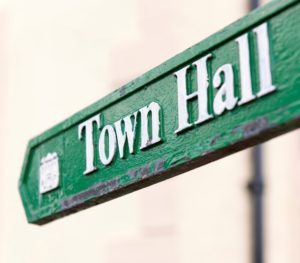How Local Governments Can Improve Strategic Planning
 Everyone within a community has a stake in growing and building their communities to make them enjoyable places to live and a place they’re proud to call home. As strategic planning for local government is considered best practices, every community should participate in strategic planning. The size of the government should determine the need and degree of implementation, as well as the frequency of strategic planning.
Everyone within a community has a stake in growing and building their communities to make them enjoyable places to live and a place they’re proud to call home. As strategic planning for local government is considered best practices, every community should participate in strategic planning. The size of the government should determine the need and degree of implementation, as well as the frequency of strategic planning.
Strategic planning for local government requires two-way communication and an open exchange of ideas. Strategic planning isn’t everyone’s most favorite activity, so it helps to gear the team up in readiness for the event. One of the big ways to improve strategic planning is to sort out as many of the details before the meeting day and agree on the process for the strategic plan. A second, and important way to improve strategic planning for local government is to use technology to streamline the process and improve communication and transparency.
Remembering Why You Need a Strategic Plan
At the mere mention of announcing that it’s time to revisit the strategic plan, it’s sure to draw groans from some staff or elected officials in local government. Others might remark, “We’ve done that, it never accomplishes anything.” When these types of remarks surface, they provide an opportunity to remind everyone of why the local government needs a strategic plan and that they chose a career in serving the public.
As the date for the strategic plan approaches, it also presents an opportunity to shape everyone’s mindset around the positive outcomes that result from sound strategic planning.
Strategic planning provides a framework that sets the stage for improvement. Because the government is affected by internal and external environments, the plan must be flexible to account for changes. Strategic plans factor the short and long-term needs of the community and build milestones to help gauge progress. A finalized strategic plan helps to balance daily operations with long-term goals. Two important objectives that should come from strategic planning are improving efficiency and effectiveness while being mindful of financial parameters. An upcoming strategic planning meeting should remind everyone that the outcome will present them with new opportunities to meet the citizens’ needs.
Getting Organized for a Productive Planning Meeting
One of the preliminary steps in preparing for a strategic planning meeting for local government is clarifying who needs to participate in the process. The type of local government structure will determine who needs to attend. The executive leader should attend whether that person is the CEO, CAO, mayor, or local government administrator. In addition, it’s important to invite the various department heads, key department staff, a member of human resources, IT, municipal counsel, and any other stakeholders, as appropriate.
Agree on the Strategic Planning for Local Government Process
There are a number of different ways to conduct a strategic planning meeting. It’s less important which method a government uses than to agree on one specific process. There are many different components to strategic planning, and it all tends to go better when everyone is on the same page. It pays to take the time to sort out all the details of the process so once the meeting starts, it doesn’t have to stop to deal with issues of protocol.
Strategic planning for local government should address decision-making, the level of participatory involvement, communication, and timeframes.
The group will make many decisions during the strategic planning meeting, so it’s vital that they decide how this will happen up front. Will the elected officials be the only ones voting on the vision, goals, objectives, and action plans, or will the entire group be allowed to vote? Will the group vote by ballot, a show of hands, or something else?
Make a list of who should be involved in the process and set timelines for meetings and workgroups.
The group should spend some time in discussing plans for communication. Will the group expect progress reports from workgroups? If so, how often? Will teams be writing the progress reports or the group leader? How will they communicate progress?
As progress occurs, how will the group communicate progress? Will citizens be able to check in through a website? Will there be some other media such as a newsletter or other print media? Who will field questions by the media?
How to Get the Most from Strategic Planning
It’s customary to do an internal and external assessment as sort of an environmental scan. This is easily accomplished by taking inventory of the government’s strengths, weaknesses, opportunities, and threats, which is also known as a SWOT analysis.
An internal assessment should take stock of the present opportunities and mandates. It should present an accurate picture of what services the government currently provides. Identify the recipients of the local government’s services. Consider whether the government has met their needs in the past and if not, how they can improve their services moving forward.
An external assessment will focus on who the government’s customers are, what is important to them, and if the government is serving their needs. This is a time to look at the current government mandates and gain understanding of how well they’ve delivered the services they’ve promised. The assessment should also consider how to meet needs while staying within the financial, legal, and governmental parameters.
Five Parts to Every Strategic Plan
Be sure to encompass all five parts to the strategic plan including the mission, the vision, the goals, the objectives, and the strategy.
The strategic plan should center in and around the government’s mission and vision. The mission is how they communicate to stakeholders, why the government exists, and how citizens benefit from the government or are impacted by it.
The vision is what the team wants to see in the future, which requires working with and listening to citizens and acquiring an understanding of what services they want and need from their government.
Goals should be broad statements of policy or intention which represent various aspects of the vision. Along those lines, objectives are the specific products or services that the team needs to attain the stated goals.
The strategy outlines all those things and identifies the action steps that the team will need to make to fulfill the strategic plan.
Using Technology to Improve Local Government Strategic Planning
Efficiency begins with taking advantage of technology to streamline processes and keep the public informed of progress. iCompass offers a Meeting Manager program that automates much of the work for agenda planning and taking minutes. This provides a central electronic platform for the pre-planning process for the strategic plan and documenting all the details for the meetings. Meeting Manager also stores the agreed format for the strategic and puts it in writing.
Transparency and accountability are equally as important in strategic planning as regular council meetings. With a Transparency Portal by iCompass, which is an extension web page of the local government website, you can keep citizens informed on the progress around the clock. If you don’t currently have the right technology to bring you into the future, it’s time to plan strategically to incorporate it at the next meeting.


